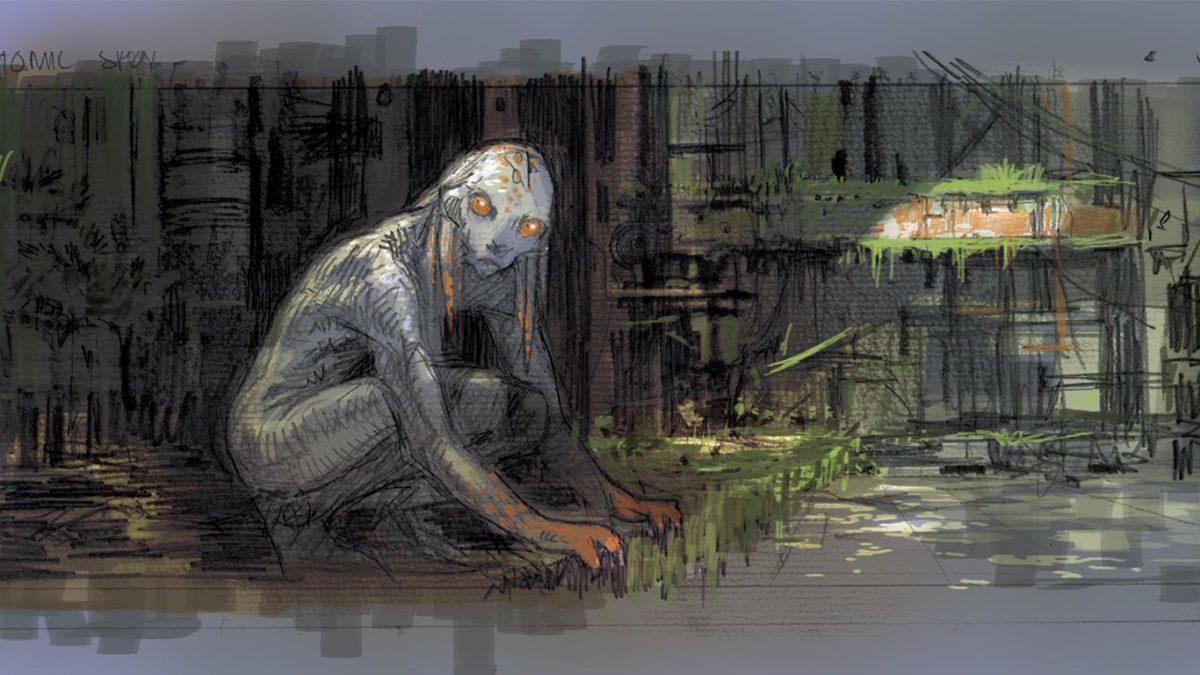Breakfast with Démontable
An interview with Douwe Dijkstra, director of Démontable
Your film begins with the shot of a kitchen table with a radio on top. As a hand searches the FM band for the right station, toy soldiers begin to invade in helicopters. Where did you get the idea to turn a usually calm space, the kitchen, into a war zone?
It is my depiction of how I often experience the presence of news and media in daily life, and especially news about armed conflict. It is something that is omnipresent, but most of the time you cannot really relate to it. It’s often consumed in a hurried and short manner, and because these are often very distant events it stays very superficially. And it makes for an absurd mixture of realities.
How did you come up with the idea to mix live film with animation? Had you already used that technique before?
I used the technique before, and the main reason I keep doing it is because I want the little events I create to look real. Not in a photorealistic kind of way, but I want a analogue feel, trying to find a natural connection between what is ‘real’ or normal and the surreal or animated.
The soldiers’ behavior is quite absurd as they do just about anything they feel like. Is this a way to mock the violent news we sometimes hear during our meals?
The soldier who is playing badminton against the wind for example, is mockery of war. It is also a reference to Don Quichot in a way. And the absurdity of all the events happening on the table are a portrait of the strange cocktail of ‘here’ and ‘there’ that occurs when we watch the news at home.
We see very few faces in your film…
That is because I don’t want the audience to think about the character, but about the events. I try to tell the story by using actions and symbols we can all relate to, not by the emotions of the person sitting at the table. Using faces can make for really powerful storytelling, but it can also limit the more open imaginative way of perceiving images I was aiming for with this film.
When you were younger, did you have a passion for tin soldiers or miniature replicas?
Actually my parents didn’t allow me to have any toy guns or other militaristic stuff. Which, of course, only made it more interesting. I did always tried to make my lego puppets look like soldiers, but I wasn’t as obsessed with soldiers as you might think when you see Démontable.
How did you envisage the sound?
As with the images, I tried to get a kind of natural sound. Rob Peters, the sound producer on the film, did a great job in creating believable powerful sound design without going over the top. When possible I recorded sound when filming the shots, and Rob used some of that footage. For the tuning radio in the beginning of the film I created a collage of songs and radio chatter that is a sort of introductory poem to the film.
The film quickly turns into a kind of “making of”, where the staging device is revealed: we see the green screens and the creation of the special effects, etc… Why did you choose to break away like this?
The film is about different realities. The very distant realities of news can feel very constructed or abstract. When creating the film I recreated some of the imagery from the news and I felt that showing my as a filmmaker doing this added to the story about remote realities that are difficult to relate to. It felt very weird to dress up like a soldier, reenacting the archetypes from the news. It looks silly, and I think this image says a lot about constructed realities, and empathy.
Does the name of the film, Démontable, refer to the dismantling of the staging device? Why did you choose to have the title in French?
It does, but first and foremost it refers to the constructed character of the mixture of realities that is our daily life in this media age. There are similar words for this in Dutch and English, but they sound awful to me, Démontable sounds just right and is also perfectly understandable for non-French people.
Should we see this film more for its performance aspect, or for its narrative dimension?
I think the latter. But it depends what you mean by them. The film does not tell a story in traditional way, but the underlying narrative is what is most important to me. Although some people can appreciate it a lot for its performance aspect without getting the narrative elements. And both are fine.
Diegetic artists always seem targeted by toy soldiers, like the hand that is injured by the car in the end. Is art dangerous?
I like to think art can be powerful enough to be dangerous. But the hand that is hit by the car is not the artist to me, it is the only hand stretching in frame coming from the audience point of view. To me it represents the ignorance towards modern media and all its possibilities. Humans staring at their screen devices. And I think that this is something more dangerous, we will learn, but not without burning our hands a few times.









